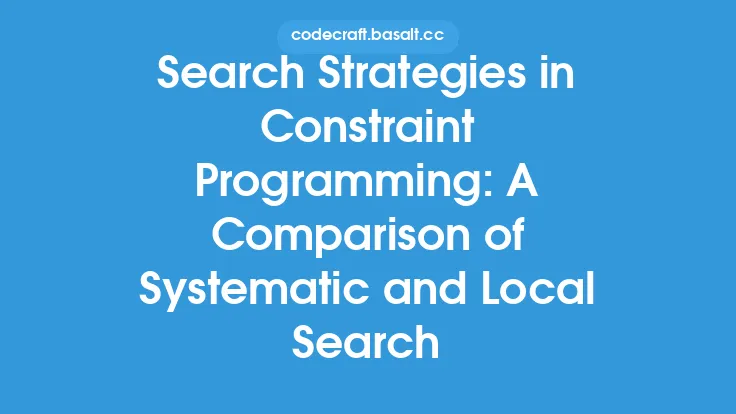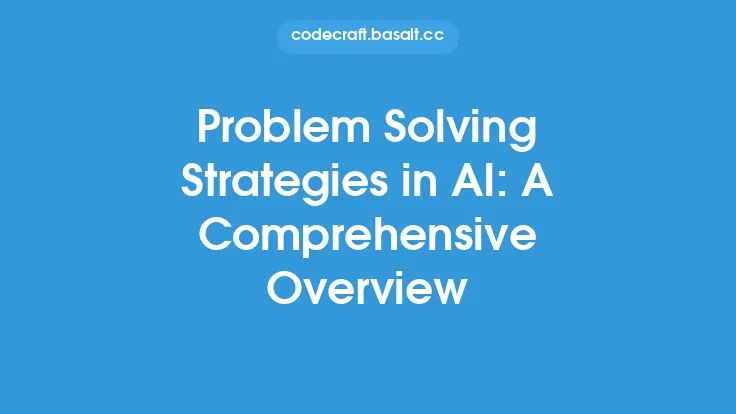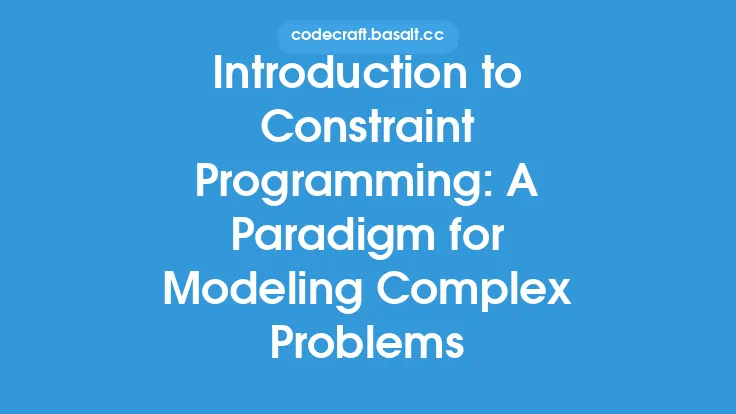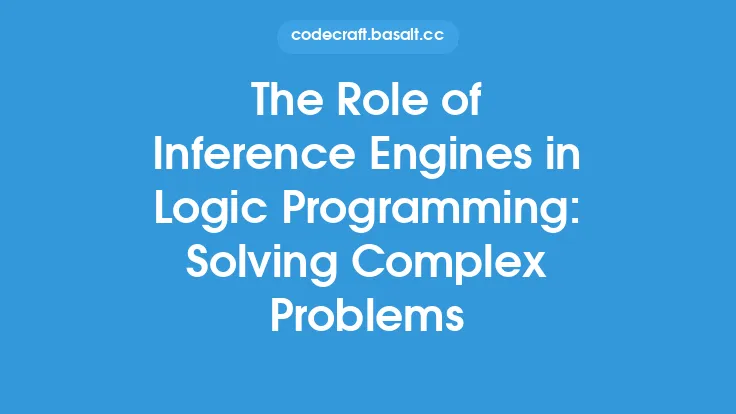Constraint satisfaction problems (CSPs) are a fundamental concept in artificial intelligence, particularly in the realm of reasoning and problem solving. These problems involve finding a solution that satisfies a set of constraints, which are rules or limitations that must be adhered to. CSPs are ubiquitous in many areas of AI, including planning, scheduling, resource allocation, and decision making. In this article, we will delve into the world of CSPs, exploring their definition, types, and solution methods, as well as their applications and challenges.
Introduction to Constraint Satisfaction Problems
A constraint satisfaction problem consists of a set of variables, a domain of possible values for each variable, and a set of constraints that restrict the values that can be assigned to the variables. The goal is to find an assignment of values to the variables that satisfies all the constraints. CSPs can be classified into different types, including binary CSPs, where each constraint involves only two variables, and non-binary CSPs, where constraints can involve more than two variables. Additionally, CSPs can be categorized as discrete or continuous, depending on whether the variables take on discrete or continuous values.
Types of Constraints
Constraints in CSPs can be categorized into different types, including:
- Unary constraints: These constraints involve only one variable and restrict the values that can be assigned to it.
- Binary constraints: These constraints involve two variables and restrict the values that can be assigned to them.
- Ternary constraints: These constraints involve three variables and restrict the values that can be assigned to them.
- Global constraints: These constraints involve multiple variables and restrict the values that can be assigned to them.
- Soft constraints: These constraints are preferences rather than hard requirements and can be violated if necessary.
Solution Methods for CSPs
There are several solution methods for CSPs, including:
- Backtracking: This method involves assigning values to variables one at a time, backtracking when a dead end is reached.
- Local search: This method involves starting with an initial assignment and iteratively applying local transformations to find a better solution.
- Constraint propagation: This method involves propagating the constraints to reduce the search space and find a solution.
- Satisfiability modulo theories (SMT): This method involves using logical formulas to represent the constraints and solving them using SMT solvers.
Applications of CSPs
CSPs have numerous applications in AI, including:
- Planning and scheduling: CSPs can be used to plan and schedule tasks, allocate resources, and manage workflows.
- Resource allocation: CSPs can be used to allocate resources, such as memory, CPU, and bandwidth, in complex systems.
- Decision making: CSPs can be used to make decisions under uncertainty, taking into account multiple criteria and constraints.
- Computer vision: CSPs can be used to solve computer vision problems, such as image segmentation, object recognition, and tracking.
Challenges in Solving CSPs
Solving CSPs can be challenging due to the following reasons:
- Computational complexity: CSPs can be computationally expensive to solve, especially for large problem instances.
- Constraint tightness: Tight constraints can make it difficult to find a solution, while loose constraints can result in multiple solutions.
- Variable ordering: The order in which variables are assigned values can significantly impact the solution process.
- Constraint learning: Learning constraints from data can be challenging, especially when the data is noisy or incomplete.
Advanced Topics in CSPs
There are several advanced topics in CSPs, including:
- Distributed CSPs: These involve solving CSPs in a distributed environment, where multiple agents or nodes collaborate to find a solution.
- Dynamic CSPs: These involve solving CSPs in a dynamic environment, where the constraints and variables change over time.
- Stochastic CSPs: These involve solving CSPs under uncertainty, where the constraints and variables are subject to stochastic fluctuations.
- Explainable CSPs: These involve providing explanations for the solutions found by CSP solvers, which can be useful in applications such as decision making and planning.
Conclusion
Constraint satisfaction problems are a fundamental concept in artificial intelligence, with numerous applications in planning, scheduling, resource allocation, and decision making. While solving CSPs can be challenging due to computational complexity, constraint tightness, and variable ordering, there are several solution methods available, including backtracking, local search, constraint propagation, and SMT. Advanced topics in CSPs, such as distributed, dynamic, stochastic, and explainable CSPs, offer new opportunities for research and application. As AI continues to evolve, CSPs will remain an essential tool for solving complex problems and making informed decisions.





